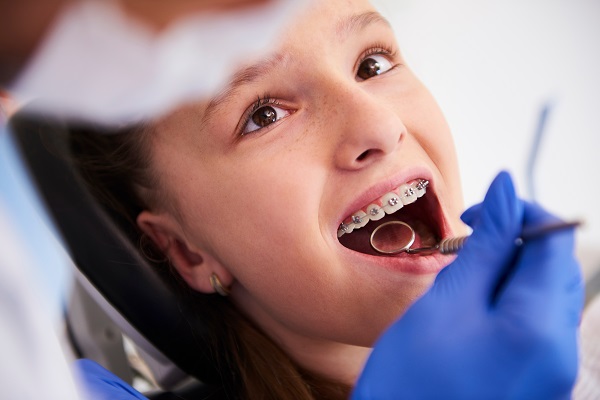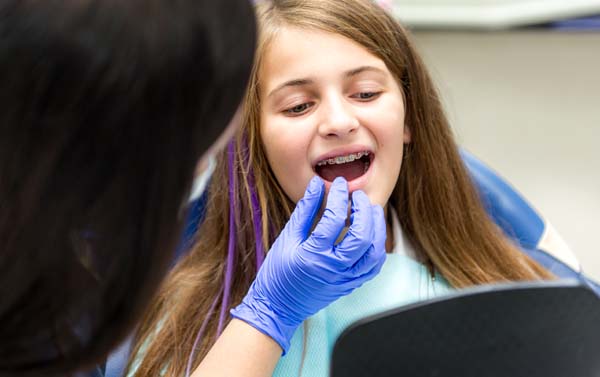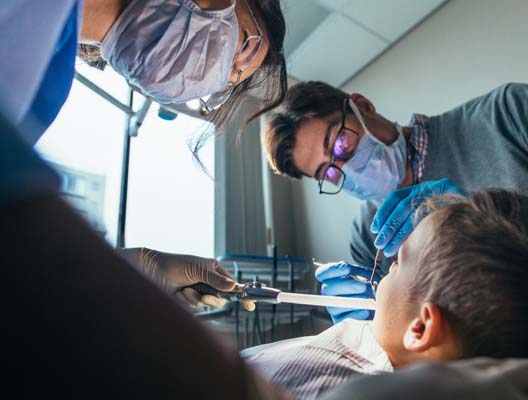Learn About Phase Two Early Orthodontic Treatment

A lot of parents are familiar with traditional orthodontic treatments for older children, adolescents and adults, such as braces or aligners. Parents may not know that younger children may need early orthodontic treatment. When children have serious oral problems early on in life, the solution is often early orthodontic treatment that starts around age seven or eight.
The first phase of early orthodontic treatment includes addressing bite issues, correcting jaw malfunction and paving the way for permanent teeth to grow in. The most common way orthodontists administer phase one is through fixed braces. In some scenarios, a retainer, extraction or headgear may be needed. Once the first phase is complete, the child will start phase two. Below is an overview of phase two in early orthodontic treatment. This information can be especially helpful for parents who are currently navigating the orthodontic process with their children. Ready to find out more?
Phase two of early orthodontic treatment
Phase two defined
Phase two of early orthodontic treatment is essentially traditional orthodontic treatment, but it aims to complete the work that was started in phase one. Phase two does not usually start until all or most of the permanent teeth have fully erupted and grown in. Traditionally, phase two of early orthodontic treatment includes a type of braces, clear aligners or fixed retainers. Outlined below are a few of the treatment outcomes that phase two of early orthodontic treatment achieves.
- It moves permanent teeth into their proper position.
- It corrects any remaining bite issues.
- It finishes improving the function of the teeth and jaw.
- It straightens any remaining crookedness or crowding.
- It closes minor gaps that were not addressed in phase one.
Aside from the above goals that phase two of early orthodontic treatment aims to achieve, there are several additional associated benefits. Some of these main benefits include improved facial appearance and higher self-esteem for children who may have previously struggled with confidence issues.
Other important things to note
It is important to note that both phases of early orthodontic treatment are necessary. Parents are often very hesitant to put their children through early treatment, but it can be very beneficial in the long run for the aesthetic appearance, function and health of the child's oral cavity. While it can be intimidating, parents can rest assured that orthodontists do everything they can to ensure treatment is carried out efficiently and safely.
Children who go without early orthodontic treatment may suffer from protruding or crowded teeth, which can result in cavities and gum disease. Additionally, the jaw may develop incorrectly, which can lead to poor speech, difficulty chewing and an unpleasant smile. In some cases, traditional orthodontic treatment may need to occur over a longer period of time if early care is not provided.
Find out more from an orthodontist
When looking for further information on early orthodontic treatment and what phase two entails, it can be helpful to chat with an orthodontist directly. Any questions or concerns can be appropriately addressed, and an evaluation can be done to identify what phase of early orthodontic treatment is necessary. Reach out today to learn more or to get started with an appointment.
Request an appointment here: https://www.myhawthorneorthodontist.com or call Hawthorne Orthodontics at (310) 921-8333 for an appointment in our Lawndale office.
Check out what others are saying about our dental services on Yelp: Early Orthodontic Treatment in Lawndale, CA.
Recent Posts
A pediatric dentist works with your child to treat their condition and teach them the importance of oral health from a young age. Misalignment and malocclusions are quite common in children and adolescents as their teeth develop. There are several reasons a child might require braces. Treating these conditions early on can help guide their…
Even though braces are common among teenagers, getting them is a new orthodontic experience for every patient. Teens and their parents tend to have many questions about braces and other orthodontic treatments for teens, when to get braces, and what having braces will be like. Here are some of the most common questions orthodontists hear…
Generally, a retainer is the last vital stage of orthodontic treatment. The appliance, made from metal and plastic, is personalized for each patient to fit perfectly into the wearer’s mouth. After braces or other orthodontic devices have corrected the alignment of the teeth, the retainer functions to stop them from shifting back to their previous…
Invisalign® is a common type of invisible braces that is developed by Align Technology. Many dentists around the world have used this treatment to fix dental problems. Invisalign is basically a removable orthodontic appliance. It is often offered as an alternative to traditional solutions. It is a good option for people who want a less…


